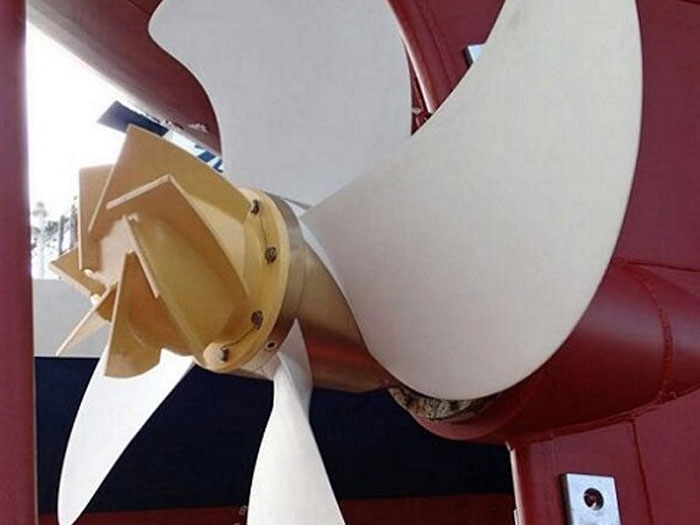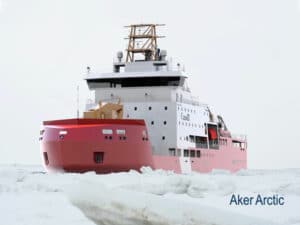
ClassNK releases guidelines for CFRP propellers
Written by Nick Blenkey
Taiko Maru's CFRP propeller
SEPTEMBER 1, 2015 — Carbon fiber reinforced plastic (CFRP) has a better strength to weight ratio than the standard bronze alloys typically used for propellers. The reduced weight of using a CFRP propeller promises several advantages, including the installation of a smaller propeller shaft.
Last May, Nakashima Propeller Co. successfully installing the first carbon fiber reinforced plastic (CFRP) main propulsion propeller on a merchant vessel, the 499 gt chemical tanker Taiko Maru.
Installation of the CFRP propeller and composite propeller boss cap fins reduced the Taiko Maru’s power required to operate during sea trials by 9% compared to conventional nickel-aluminum-bronze propellers.The Taiko Maru’s propeller was designed and built with support from classification society ClassNK, which granted design and manufacturing approval..
The Taiko Maru’s propeller was developed with support from the ClassNK Joint R&D for Industry Program and based on the knowledge obtained through this joint R&D project, ClassNK has summarized the requirements for the approval of the manufacturing process for composite propellers and the testing/inspection of the product in the form of the world’s first Guidelines on Composite Propellers (Part on Manufacturing/Product Inspection).
ClassNK says that the strength and corrosion resistance of composite materials makes them widely used in fields such as aerospace, automobiles, and wind power generation.
The substitute composite material carbon fiber reinforced plastic (CFRP) weighs in at around just 1/5 of aluminum-bronze. Despite its ultra-lightweight composition, CFRP exhibits the same or more strength compared to the aluminum-bronze composite materials used in conventional propellers. Due to its light weight, CFRP propeller shafts can be manufactured with smaller diameters, reducing costs. In addition, by taking advantage of CFRP’s strength, it is possible to produce thinner propellers with smaller blade areas, potentially increasing the propeller’s efficiency.
In order to apply a composite propeller to ships, the material must have the required performance at least equal to existing aluminum-bronze composite materials, and it is necessary to confirm in advance that the composite propeller as an industrial product can be manufactured with uniform quality.





Leave a Reply
You must be logged in to post a comment.